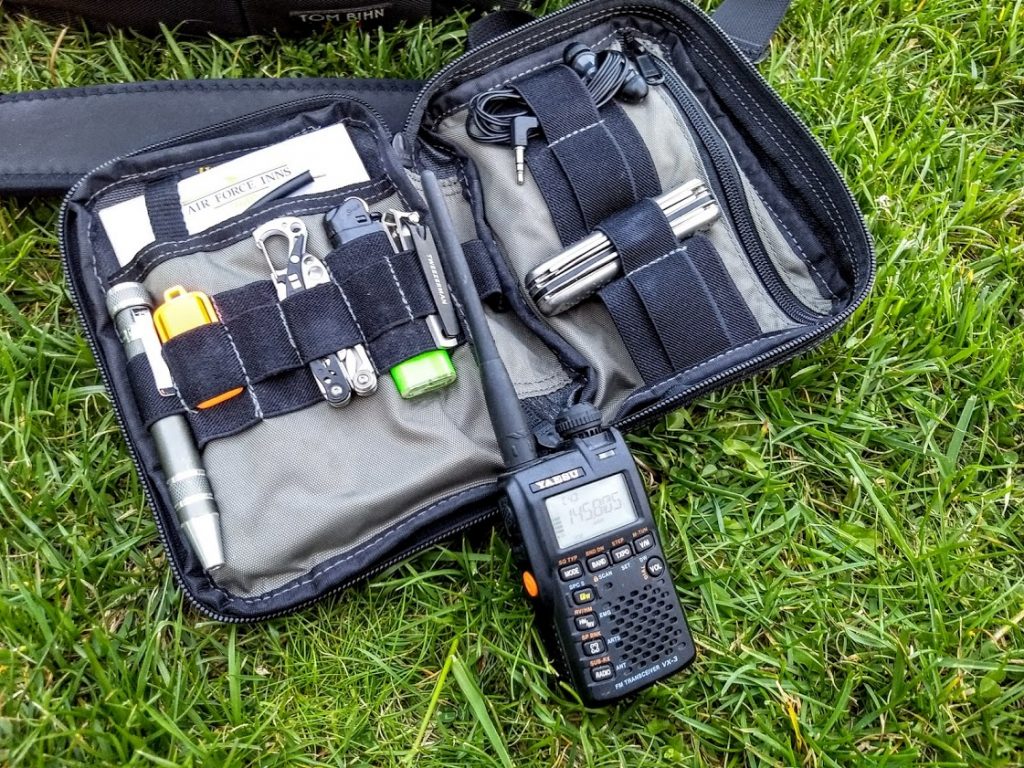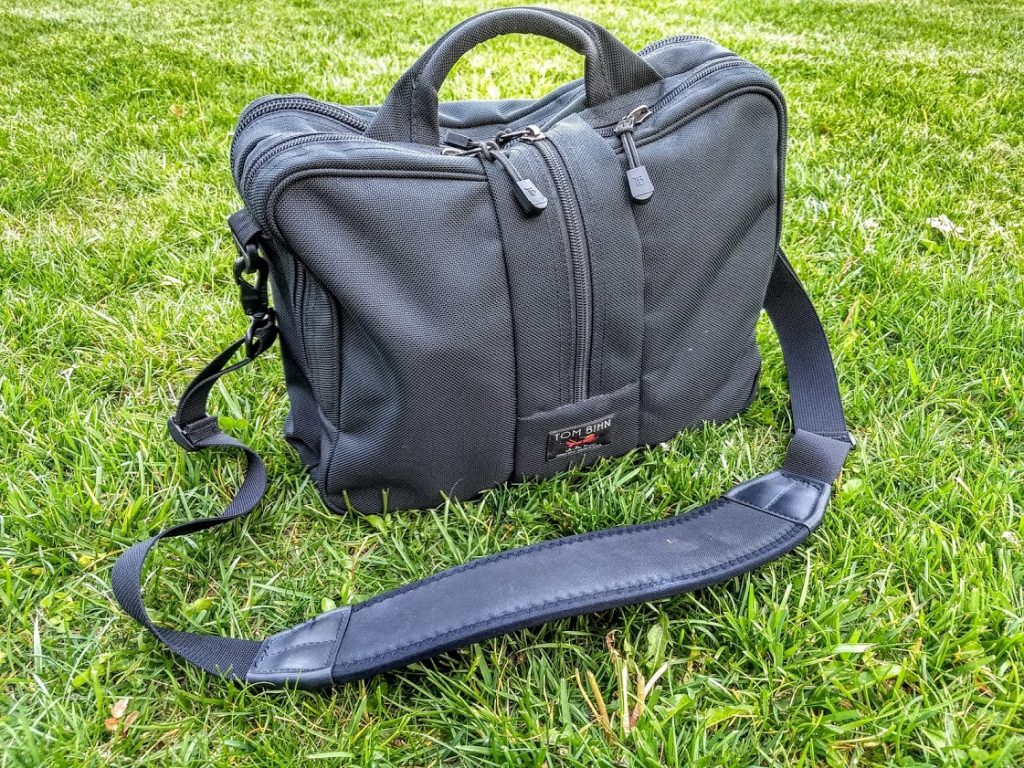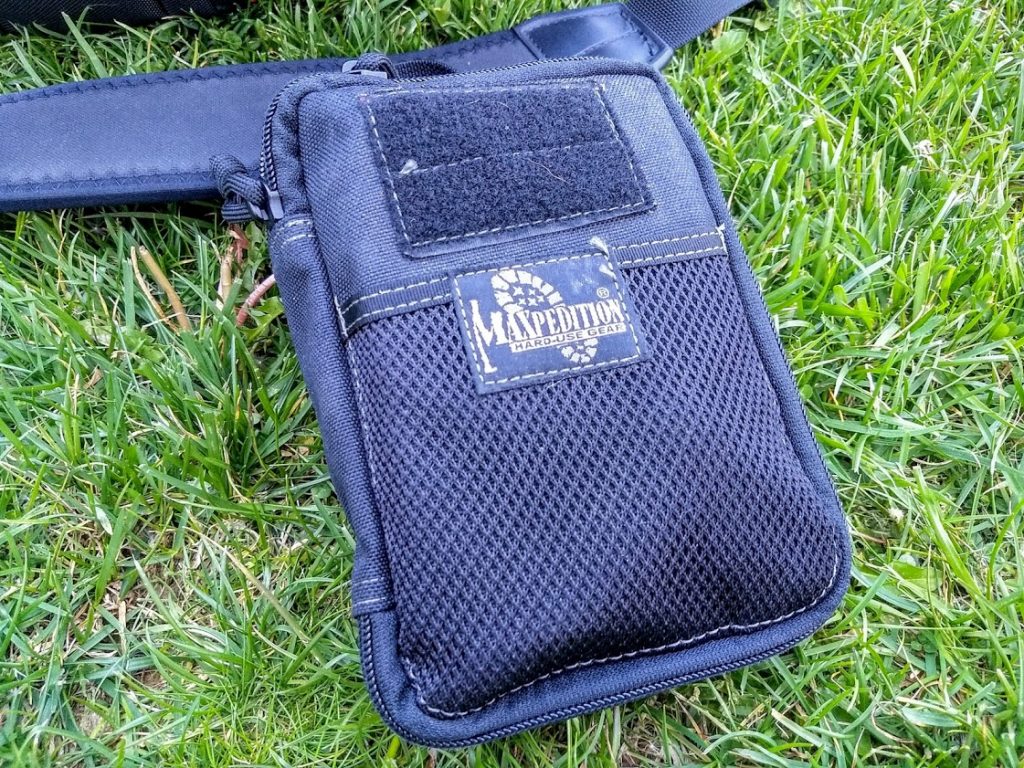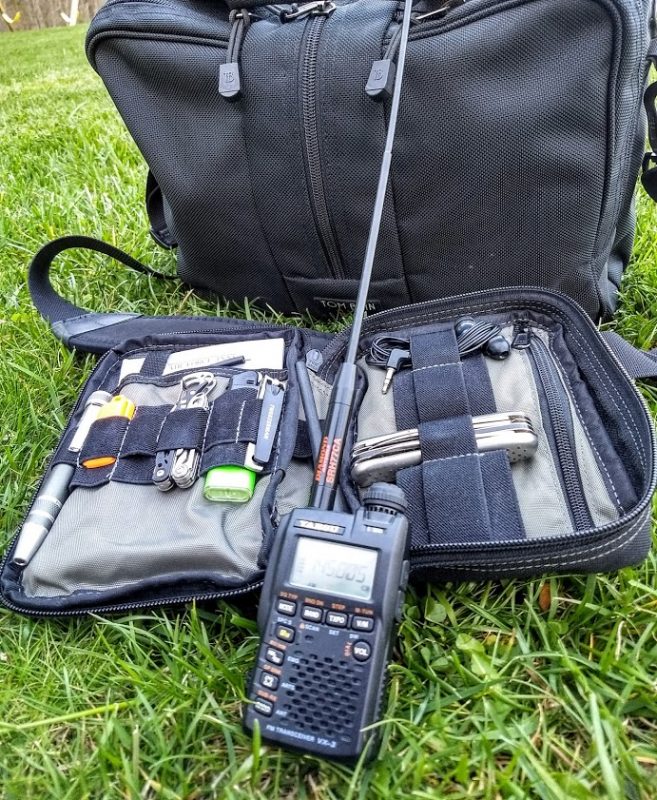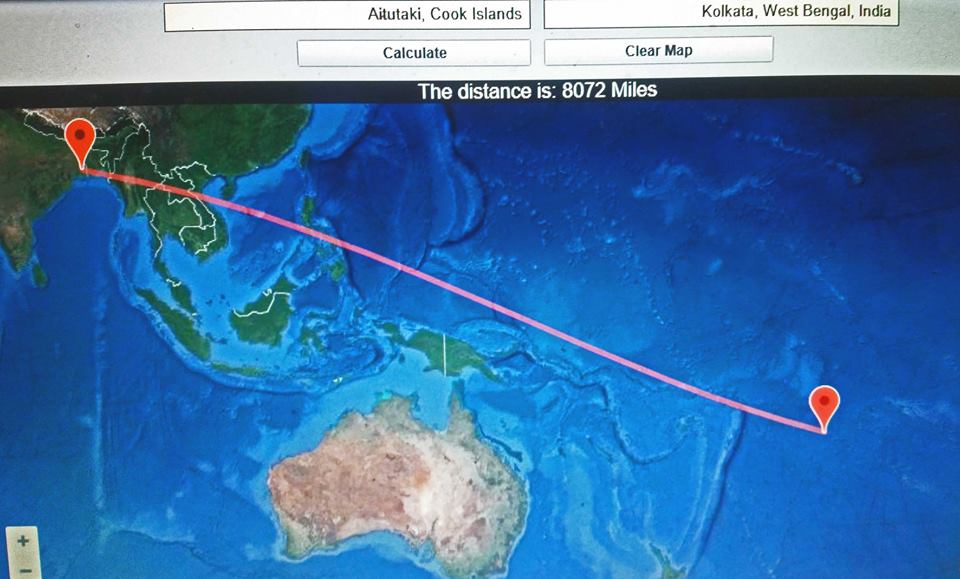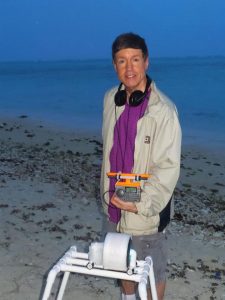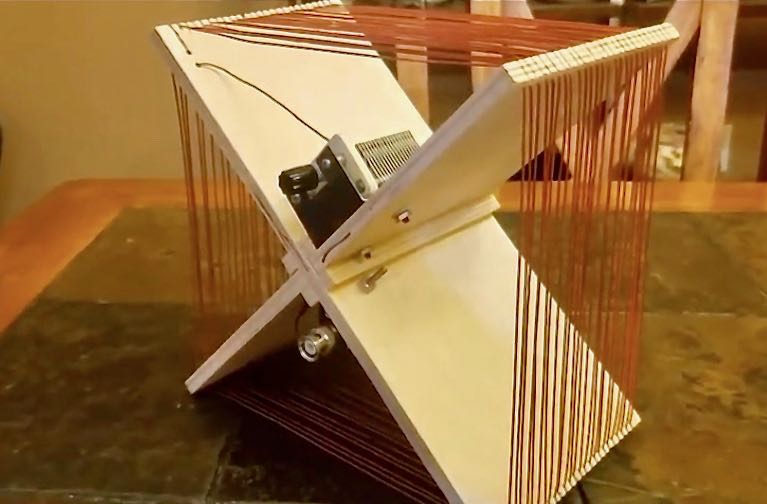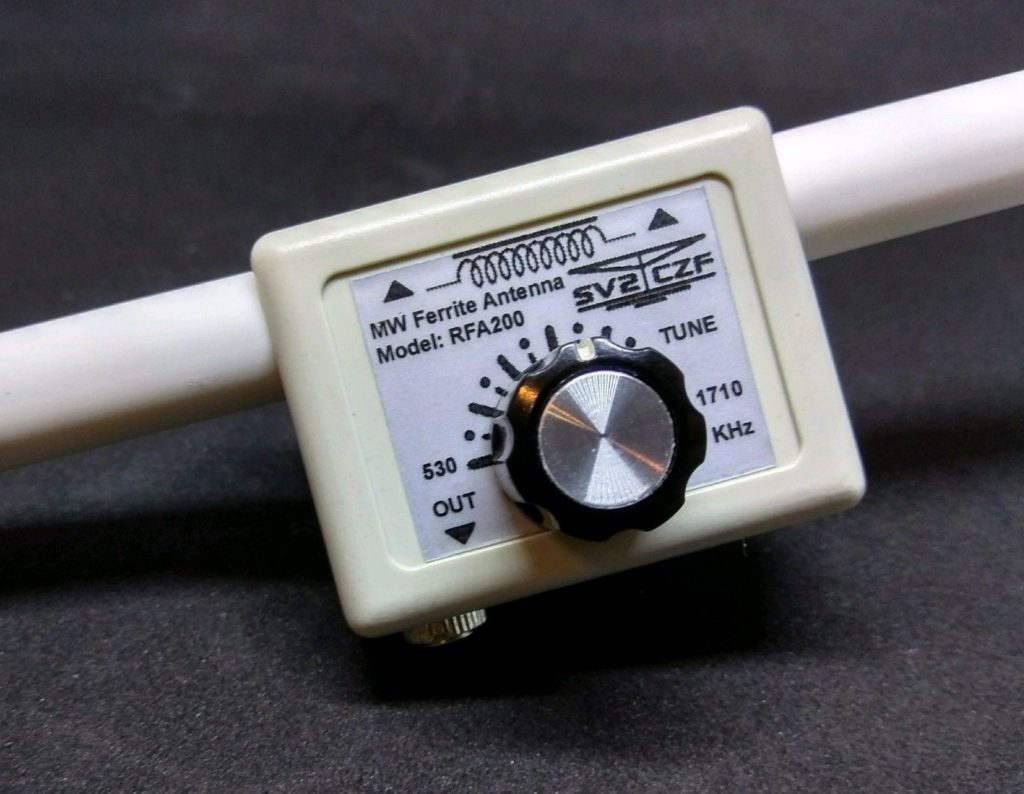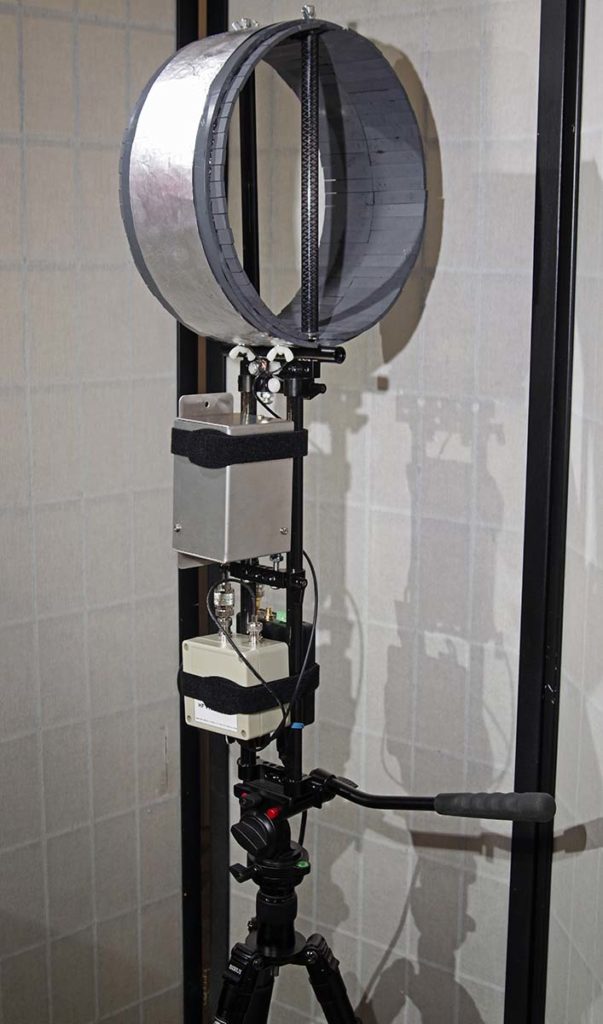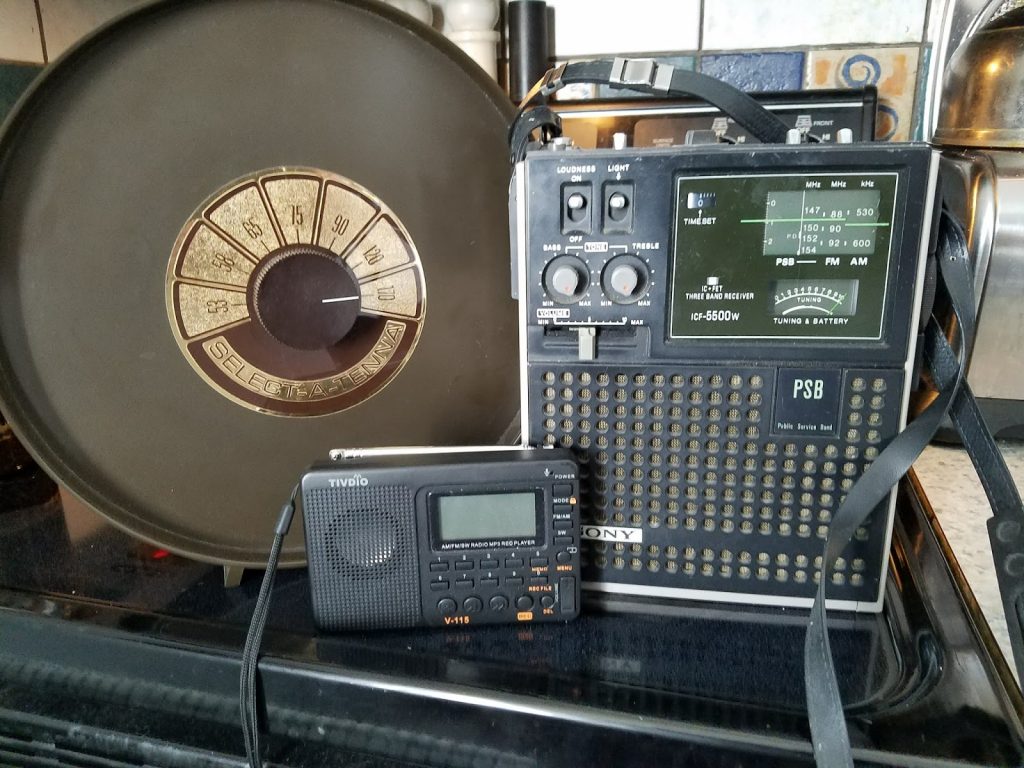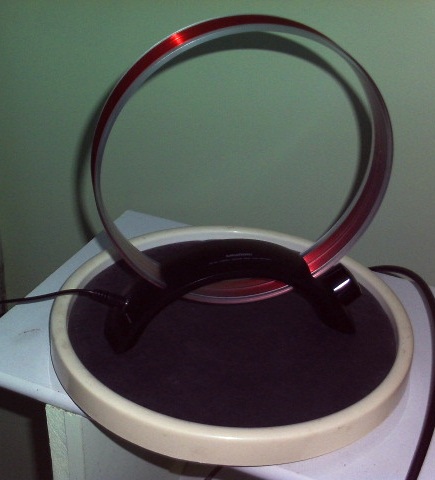SWLing Post contributor, Matt, writes:
Thomas: I know you’re a self-proclaimed pack geek and so am I! You published a photo of your EDC pouch in a post last year. Just a teaser really! What is that pouch and I assume you have a larger carry bag as well? Can you provide more details? I’m ever revising and honing my own EDC pack. Any details would be appreciated.
Thanks for your question Matt! Besides radio, you’re bringing up on one of my favorite topics: packs! You may regret having asked me!
Yesterday evening, I snapped a few photos of my EDC (Everyday Carry) bag and the pouch you’re referring to. Your inquiry is prompting me to consider publishing a more detailed look at my EDC gear–especially since radio is such an important part of it.
I do carry a larger EDC bag at all times. Typically, this is the Tom Bihn Pilot:
For years, I carried a Timbuk2 messenger bag, but it didn’t have the type of organization I prefer in an EDC bag. My EDC bag must be rugged, water resistant and accommodate my 13″ MacBook Air while still having enough depth to comfortably fit the rest of my gear.
I’ve been using the Tom Bihn Pilot for almost a year and have been very pleased. The Pilot is an investment to be sure, but (like Red Oxx) Tom Bihn construction quality is superb and comes with a lifetime warranty.
It’s amazing how much gear will comfortably fit inside without making the bag bulge. The Pilot also has a dedicated water bottle pocket in the middle of the front panel. While I do carry water, it primarily houses my never-leave-home-without-it Zojirushi Stainless Steel Mug (affiliate link) which is filled with piping hot dark roasted coffee!
I also use the water bottle pocket to hold full-sized handled VHF/UHF radios. It accommodates either my Kenwood TH-F6, Yaesu FT2D, or Anytone AT-D868UV perfectly. Indeed, all of the front pockets will accommodate an HT since the zippers terminate at the top of the bag. Long antennas can easily poke out while the zipper still seals 99% of the opening.
The Pilot has one main compartment that houses my 13″ MacBook Air laptop.
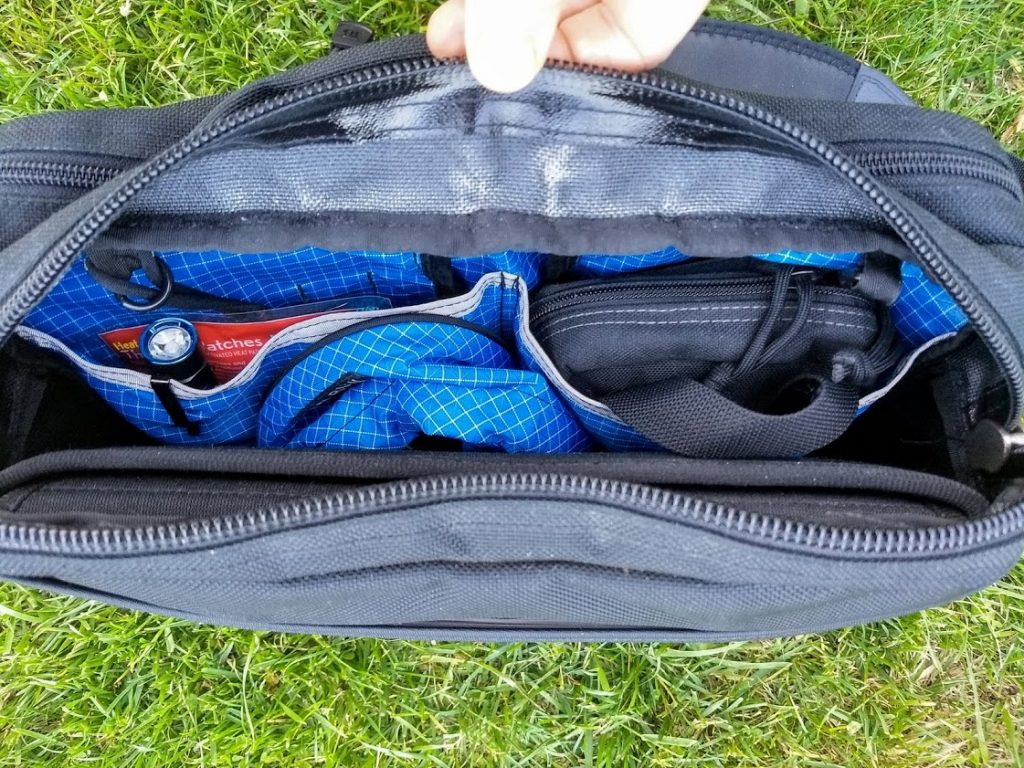 The Pilot laptop compartment is spacious and has two built-in pockets opposite the laptop sleeve: one of these pockets (the one on the right in the photo above) holds my EDC pouch, the other holds first aid supplies, an Olight SR1 flashlight and Nitecore LA10 latern (affiliate link). My laptop is in a TSA-friendly Tom Bihn Cache.
The Pilot laptop compartment is spacious and has two built-in pockets opposite the laptop sleeve: one of these pockets (the one on the right in the photo above) holds my EDC pouch, the other holds first aid supplies, an Olight SR1 flashlight and Nitecore LA10 latern (affiliate link). My laptop is in a TSA-friendly Tom Bihn Cache.
While the Tom Bihn Pilot is the bag I use most days, also use a Red Oxx Micro Manager and–when I need 25 liters of capacity–the Tom Bihn Synapse 25.
I pack most of my EDC gear in pouches, so moving from one bag to another takes me all of one minute.
My EDC pouch is the Maxpedition Fatty Pocket Organizer (affiliate link). I love this pouch because it’s incredibly durable, affordable and opens like a clam shell to lay flat.
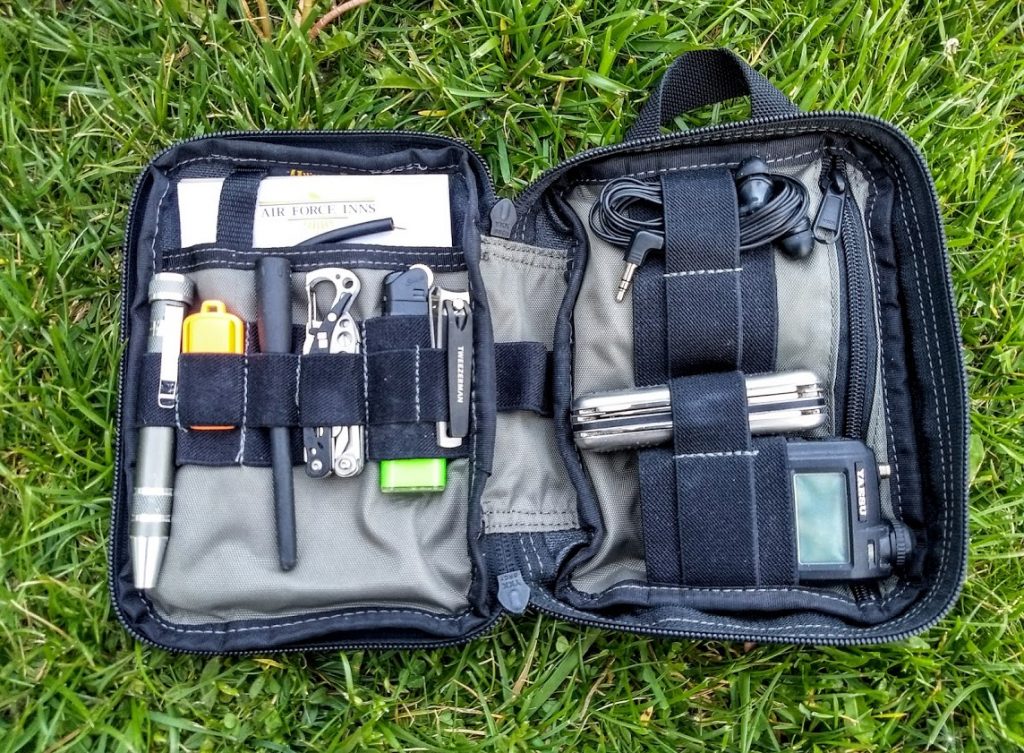 Everything has its place. Not only does it hold my Yaesu VX-3R handheld, but also a multi-function knife, a Leatherman Style PS tool, clippers, earphones, multi-bit screwdriver, USB stick, notepad, spare VX-3R battery, a mini first aid kit, titanium spork, and much more! Someday I’ll pull the whole thing apart and note each item.
Everything has its place. Not only does it hold my Yaesu VX-3R handheld, but also a multi-function knife, a Leatherman Style PS tool, clippers, earphones, multi-bit screwdriver, USB stick, notepad, spare VX-3R battery, a mini first aid kit, titanium spork, and much more! Someday I’ll pull the whole thing apart and note each item.
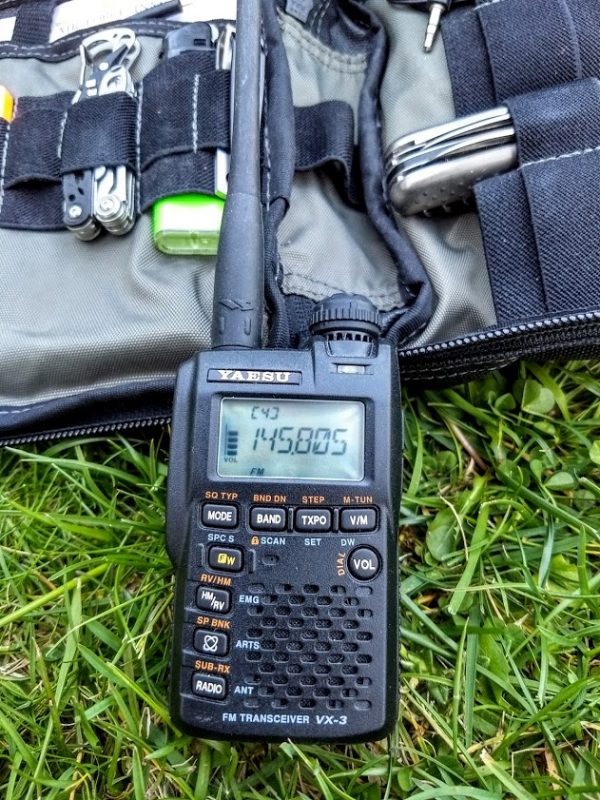 Why do I choose the Yaesu VX-3R? First of all, it’s compact. This HT is so small it’ll tuck away anywhere. Not only is it dual band, but it’ll also receive the AM broadcast band (even has a little ferrite bar inside), the shortwave bands, and the FM broadcast band.
Why do I choose the Yaesu VX-3R? First of all, it’s compact. This HT is so small it’ll tuck away anywhere. Not only is it dual band, but it’ll also receive the AM broadcast band (even has a little ferrite bar inside), the shortwave bands, and the FM broadcast band.
The mini rubber duck antenna will work in a pinch, but I also carry a flexible Diamond SRH77CA in the floor of the Tom Bihn Pilot’s main compartment.
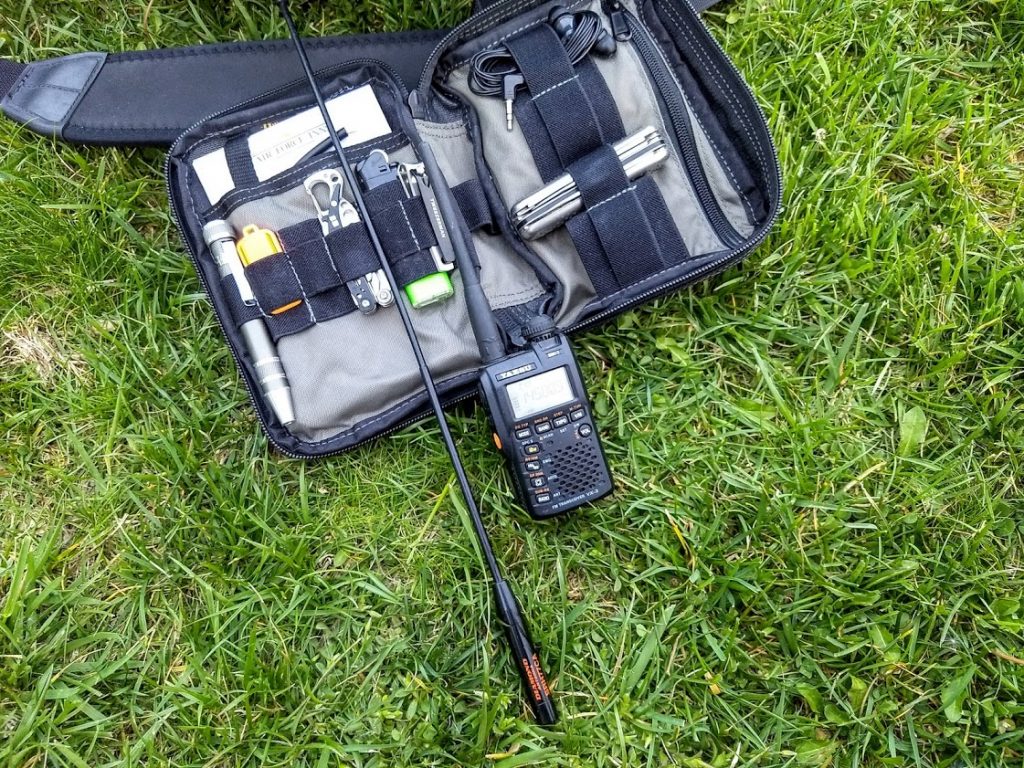 When I attach the Diamond antenna, it significantly increases the VX-3R’s capabilities.
When I attach the Diamond antenna, it significantly increases the VX-3R’s capabilities.
While the VX-3R does cover the HF bands, don’t expect amazing performance. Selectivity is poor, but sensitivity is adequate. For a shortwave antenna, I carry a short length of coax: one end is terminated with an SMA connector, the other has the center conductor exposed.
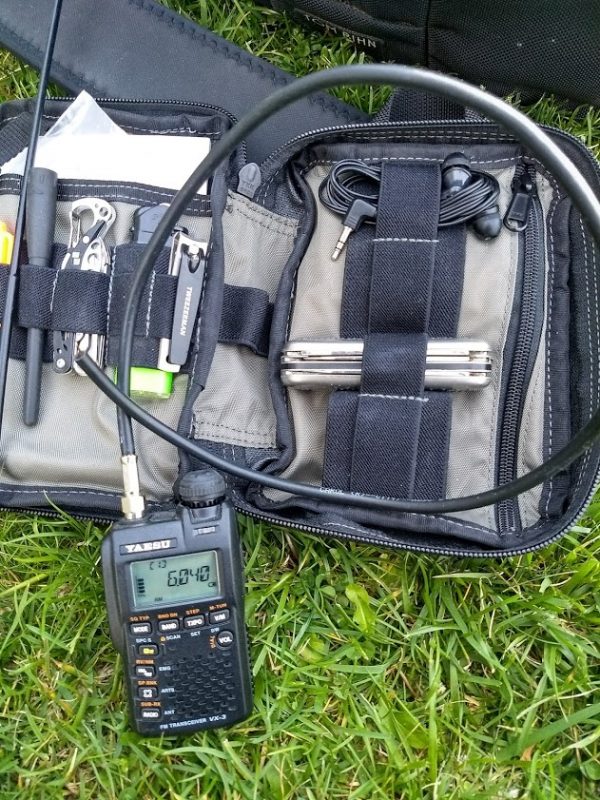 I also carry a short alligator clip cable which I clip to the exposed center conductor and then to a length of wire. The end result is a very cheap, flexible and effective portable HF antenna!
I also carry a short alligator clip cable which I clip to the exposed center conductor and then to a length of wire. The end result is a very cheap, flexible and effective portable HF antenna!
Someday, I’ll take everything out of my EDC pack, inventory the contents and publish a post about it. Somehow, that’ll please my inner pack geek! I’m overdue a review of the Tom Bihn PIlot and Synapse 25.
Post readers: Do you have an EDC pack built around a radio? Please comment and include links to your favorite gear!

